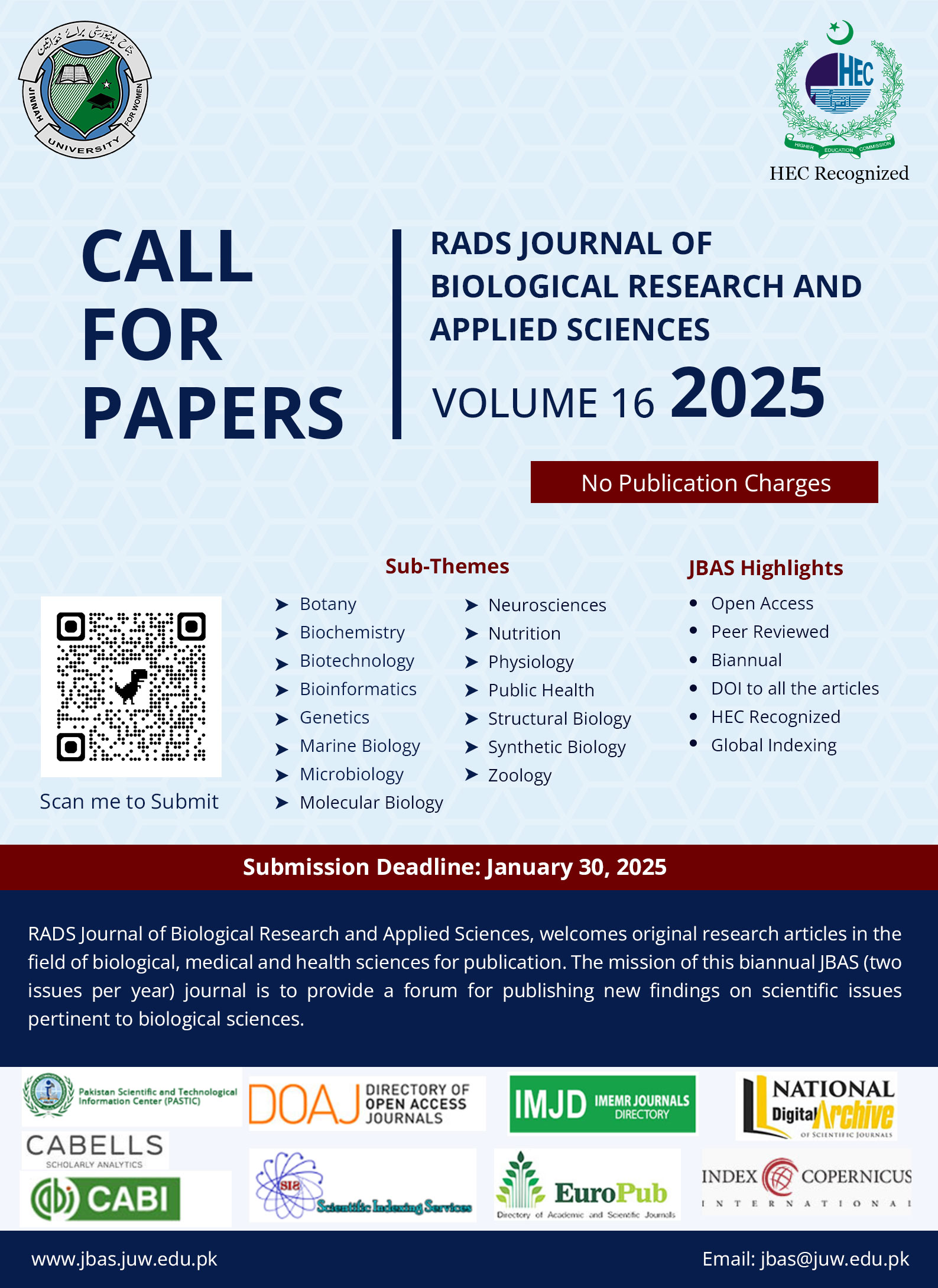Histological Effects of Sodium Metabisulfite Exposure on the Gills, Kidneys, and Liver of the Labeo rohita
Keywords:
Sodium metabisulfite, Nephrotoxicity, Hepatotoxicity, Fish, HistologyAbstract
Background: Sodium metabisulfite (Na2S2O5) is a disinfectant and preservative agent that is commonly used in the food industry and polluted water bodies, and spread through industrial wastes.
Objective: Current study was conducted to observe the impact of widely used sodium metabisulfite (Na2S2O5) on the gills, kidneys, and liver of the Labeo rohita.
Methods: During this experimental research, fish were divided into three groups. One group was treated as control. Two groups were exposed to sodium metabisulfite in different concentrations ranging from 29 mg/L to 68 mg/L for 28 days.
Results: The 96h LC50 value for sodium metabisulfite (Na2S2O5) was 130 mg/L. Histological changes revealed moderate to severe damage in time and concentration-dependent manners. Photomicrographs of the gills of exposed fish showed different histological alterations such as hyperplasia, marginal gill lamellae, blood congestion, gills lamellae aneurysm, and distortion of the gill cells. Results indicated that exposure to sodium metabisulfite caused severe progressive alterations such as cytoplasmic vacuolization, melanomacrophagy, and expression of hepatocytes and cluster nuclei in the liver tissues of the exposed fish. Kidney tissues of the treated L. rohita revealed different histological changes including the wide hypertrophied nucleus, sinusoidal spaces, cloudy swelling, glomerular expansion, and tubules starting the degeneration process compared to control fish.
Conclusion: Our results represent the pioneering report demonstrating that sodium metabisulfite can act as a potent toxic agent for Labeo rohita.
Published
Issue
Section
License
Copyright (c) 2024 RADS Journal of Biological Research & Applied Sciences

This work is licensed under a Creative Commons Attribution-NonCommercial 4.0 International License.

This is an Open Access article distributed under the terms of the Creative Commons Attribution License (http://creativecommons.org/licenses/by/4.0), which permits unrestricted use, distribution, and reproduction in any medium, provided the original work is properly cited.

















